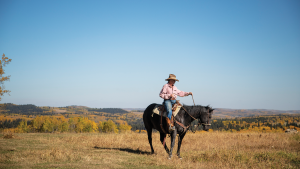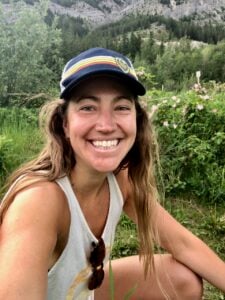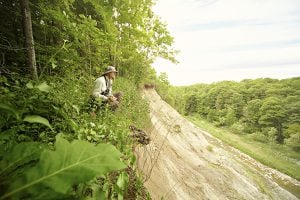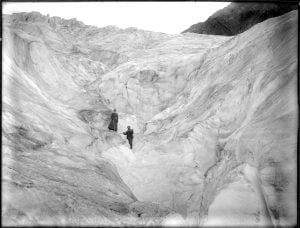“I initially thought you needed a special skill – something that you’d need to dedicate your whole life to learning — but I quickly realized that those skills were within reach,” says Aryanto.
After completing avalanche safety training to learn how to safely negotiate the risks of exploring avalanche terrain, Aryanto embarked on his first adventure to locate a glacier cave with fellow photographer and mountaineer Ludovic Labbé-Doucet. On an early morning in October 2019, the pair set out at first light and hiked to a remote part of Banff National Park, where they discovered the crumbling entrance to a cave.
“Identifying an opening can be challenging because you’re having to scan the mouth of the glacier, which can often be a huge area,” says Aryanto. “But once you spot it, the thrill of discovery really gets the blood pumping.”
Acutely aware of the risks of entry — avalanche and structural collapse, to name a couple – the pair entered one at a time, on the off-chance something went wrong.
Once inside, Aryanto says he was “in total awe … It’s like entering a fairy tale and leaving reality behind. The atmosphere is surreal and cannot be experienced anywhere else in the world; only inside the body of a glacier. I thought I’d never get to experience this in my life.”
Over the following two winters, Aryanto explored three more glacier caves in the Rockies by foot or split board. He was always accompanied by another adventurer and never saw another soul. The caves varied in shape and size, and each visit was unique.









